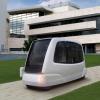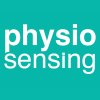
Ageing@Coimbra aims to enhance the role of the elderly within society and to strengthen projects and programs offering innovative best practices in healthcare and social support, scientific research, and technological applications which promote overall well-being and active and healthy ageing.

New methods of imaging of the retina opened new doors to early diagnosis and, consequently, effective prevention and effective treatment at the right time.
Currently it is estimated that 39 million people worldwide are blind and 285 million are visually impaired. In addition, 246 million people worldwide have low vision and 85% of blind people are 50 years and older. Diabetes leaves 23.000 people unable to work and costs with the disease amounted to 952 million euros per year. Only job loss and absenteeism totalled 336 million euros. Diabetes is the leading cause of disability, but the blindness overcomes cerebral vascular accident and stroke in relation to increased morbidity. Blindness is the second disease related to diabetes that brings more years of life lived with disability, i.e, with less quality. According to 2008 data, 27% of years lived with disability are due to blindness, above accounted for problems attributed to diabetes, such as stroke or heart attack. Target population is all type 1 and type 2 diabetic patients except those already treated/in treatments for diabetic retinopathy. This approach uses new non-invasive methodologies, such as digital fundus imaging and Optical Coherence Tomography, using automatic and human grading in central units. This ensure early detection of these diseases and the identification of early changes that could be treated in time and prevent blindness, thus avoiding absenteeism and loss of employment, and contributing to a clear reduction in the costs of health and treatment of patients. This prospective model involves an SME (Critical Health) and is being supported by the Regional Health Administration of the Centre Region (ARS-Centro).

The main objective of this project is to evaluate the impact of cognitive stimulation on cognition, depression and quality of life of institutionalized in nursing homes or community-dwelling elders.
Training programme: The cognitive stimulation program “Making a Difference (MD): an Evidence-based Group Programme to Offer Cognitive Stimulation Therapy to People with Dementia” (Spector et al, 2006), adapted to the Portuguese population by Apóstolo & Cardoso (2013) comprises a main 14 session program running twice a week (7 weeks) and a 16 session maintenance program. Each MD session takes 45 minutes to one hour and incorporates the use of a 'Reality orientation (RO) board', displaying both personal and orientation information, including the group name (as chosen by participants). The guiding principles of the CS program involve using new ideas, thoughts and associations; using orientation (but sensitively and implicitly); focusing on opinions rather than facts; using reminiscence as an aid to the here-and-now; providing triggers to aid recall; creating continuity and consistency between sessions; focusing on implicit (rather than explicit) learning; stimulating language; stimulating executive functioning and being person-centered. It aims to create an environment where people have fun and learn, and where they strengthen their abilities and relationships among the group members, thus maintaining their social and cognitive skills at their optimum ability (Aguirre et al., 2010; Spector et al., 2006). Relevance of the practice is related to: · Decrease isolation, loneliness and depressive symptoms. · Avoid cognitive impairment, cognitive frailty and dependence. · Improve seniors quality of life, well-being and autonomy. · Promotes pro-activity and social interaction of elderly (CS is performed in group of 6-7 elders).

ISA Intellicare developed and commercializes the solution One Care Safe. OneCare-Safe is an easy-to-use equipment of the OneCare solutions range and it is a mobile device with a fall detector and allows the remote localization of people.
One Care Safe is dedicated to the monitoring of seniors, people with dementia or with special needs, inside and outside the home. It is also useful for people who practice extreme sports (for e.g., Motorsport, MTB), for occupations at risk (for e.g. transporting values, security guards) and for protection, as a passive safety device of people (adults and children).

The aging process leads to increased fall prevalence in the elderly and literature shows that well-designed exercise programs can prevent falls.
We have conducted a pilot trial to test the effectiveness of a periodized and controlled exercise program on the functional fitness parameters related to fall risk. 143 functionally independent participants (mean age = 72.3±5.2 years, 84.6% women) were included in a community exercise program “+Active Ageing” during 24 weeks. The intervention group (IG) (n=72) program focused on postural stability, balance, mobility and strength on lower limbs and was periodized in two cycles of 12 weeks. The control group (CG) (n=71) program followed a multicomponent general approach. Health & fall and physical activity questionnaires, together with functional fitness tests were administered by trained examiners. All functional fitness capacities of the IG were improved in 12 weeks, and kept the improvements for 12 weeks more. Nevertheless, cardiorespiratory and mobility parameters (2min; U&G) demonstrated significant interaction group with time.

The objective of this study was to describe the epidemiology of osteoporosis hip fractures in the Portuguese population and to develop a Portuguese version of the World Health Organization fracture risk assessment tool (FRAX®).
All cases of hip fracture occurred at or after 40 years of age were extracted from the Portuguese National Hospital Discharge Register from 2006 to 2010. Age and sex-ranked population estimates and mortality rates were obtained from National Statistics. Age and gender stratified incidences were computed and the average of the five years under consideration was taken. Rates for other major fractures were imputed from the epidemiology of Sweden, as undertaken for most national FRAX® models. Hip fracture incidence rates were higher in women than in men and increased with age. The lowest incidence was observed in 40-44 years group (14.1 and 4.0 per 100,000 inhabitants for men and women, respectively). The highest rate was observed among the 95-100 age-group (2,577.6 and 3,551.8/100,000 inhabitants, for men and women, respectively). The estimated ten-year probability for major osteoporotic fracture or hip fracture increased with decreasing T-score and with increasing age. FRAX Portugal has been adopted and officially validated by World Health Organization (WHO). The Portuguese authority for health (Direção Geral de Saúde) will incorporate FRAX in the clinical orientation guidelines for management/risk evaluation of osteoporosis. The pharmaceutical company AMGEN has been a partner in developing FRAX Portugal and Merck Sharp & Dohme is a major partner in dissemination.

ICNAS-P obtained in December 2011 its first Marketing Authorization for [18F]Fludeoxyglucose, an imaging biomarker for cancer detection and staging, that is distributed to almost all hospitals and clinics that perform PET exams in Portugal.
ICNAS-Produção (ICNAS-P) is a company created in 2009 by the University of Coimbra (UC) to work in the area of radiopharmaceutical production and molecular imaging. The company operates the only public cyclotron in the country complete with full GMP (Good Manufacturing Practice) production labs and benefits from the extensive imaging facilities at ICNAS that include 2 PET scanners (1 clinical with CT, 1 pre-clinical), 2 MRI (3T for Humans, 9.4T for animals), 4 SPECT and an optical imaging system. Located at the new health campus of the University of Coimbra the company has strong links with IBILI (centre of excellence for R&D in Biomedical Imaging), CNC (Centre for Neuroscience of Coimbra) and several nearby hospitals including the Coimbra University Hospital (one of the country’s major reference hospitals) and the Coimbra Institute of Oncology. ICNAS-P obtained in December 2011 its first Marketing Authorization for [18F]Fludeoxyglucose, an imaging biomarker for cancer detection and staging, that is distributed to almost all hospitals and clinics that perform PET exams in Portugal. In June 2013 ICNAS-P also received production authorization for its second product to enter the market ([68Ga]DOTA-NOC), for the evaluation of neuroendocrine tumours, and has already 3 more products in the pipeline to be marketed by the end of the year. The company also produces carbon-11 based radiopharmaceuticals for internal use in ICNAS. These include Pittsburgh Compound B (PiB), an imaging Biomarker for Alzheimer’s disease, flumazenil (for central benzodiazepine receptor mapping), Raclopride (a marker for Parkinson’s disease) and PK11195 (for neuroinflammation studies).

Patients, with mobility limitations, at Rovisco Pais Hospital (rehabilitation center) can move 24h/day between different buildings of this complex by using the non-pollutant, electric, autonomous car “Move”.
This small mini-bus is equipped with ramps for wheel chair access and circulates in a predetermined circuit by means of electromagnetic detectors to restrict the path and detect potential obstacles. The operation of “Move” is very simple and controlled by the user. Patients in Rovisco Pais Hospital now have the freedom to move within the complex of buildings without the need to call for assistance (24h/day). The so called Intelligent Transport System (ITS) use electric vehicles built with leading edge technology, designed to be easily used for small trips at low speed in urban or private environments, to complement regular public transports. The vehicle exclusive feature is its autonomy - it is a vehicle without a driver, fully automated. This driverless solution is also silent and zero emission, therefore contributing to a healthier quality of life. It has the possibility to use solar energy, being activated only when it is called to service (demand response), avoiding an unnecessary waste of energy. Special highlights are its user friendly features, which includes bi-directional communication with the user. Moreover, this vehicle has the ability to adjust the position in which the vehicle stops according to the user needs.

The impact of Multi-compartment compliance aids and Pharmacist follow up improve adherence to therapy resulting in positive clinical biomarkers.
A prospective non-randomized controlled study was conducted from January to April 2011 in a community pharmacy (Central Pharmacy, Sabugal, Portugal). Individuals who met the following inclusion criteria were recruited: patients aged 65 years or over, autonomous, prescribed with 3 or more medicines, and being followed in the pharmacy for lipid profile, glycaemia or blood pressure. To evaluate the impact of multi-compartment compliance aids on adherence to therapy and on clinical biomarkers in a real-life elderly population that’s also being cared with advanced clinical pharmacy services.

Residents in the old, narrow, sloping streets of the historic area of Coimbra use the personalized electric environment-friendly car “Pantufinhas”.
This transportation system serves 4 main neighbourhoods of the historic area of Coimbra and travels in a circuit, allowing people to move between urban areas with primary care services, pharmacies, markets, banks, citizen’s shops and other services important for daily lives of +65 old residents of Coimbra. Residents receive a free ticket admission to this transportation service. In Coimbra, +65 old people living in the historic area may now move more frequently for daily live or to meet friends in other areas of the city. Pantufinhas is a major instrument to counteract isolation in senior population of Coimbra. The electric car “Pantufinhas” serves four main neighbourhoods in Coimbra offering about 58,900 trips/year. Pantufinhas project resulted from a partnership with the mobility and transportation authority (IMTT) with the Municipality of Coimbra.

Several standardized assessments and physical performance tests reliably predict falls events. Yet the consistent use of measures in physical therapy and other clinical settings is not widely practiced.
Factors contributing to the non-use of standardized assessments may include insufficient time and inadequate space or equipment. Recently, a brand new equipment was released into the market: PhysioSensing. PhysioSensing is a product, from Sensing Future Technologies Company, that comprises an instrumented chair and platform, named Megara and Hercules, which provides biofeedback in a display. Megara chair, whose seat is divided into two independent and instrumented quadrants, allows the measurement of force distribution in each quadrant, differentiating the load exerted on the left and on the right side of patients. The chair allows an automatic height adjustment and the arms’ position is also adjustable. Hercules platform is divided into four independent and instrumented quadrants, which allows the quantification of loads exerted on each of them. PhysioSensing is a training device for balance and motor control that enables measurements and training in the position of sitting, standing, as well as the analysis of movement getting up and sitting down. It allows training the sagital equilibrium, whose operation is based on the acquisition of the mass distribution on the various support quadrants (seat and/or feet). It has the ability to provide visual biofeedback in real-time, directed to the user and the healthcare professional, through software interfaces which have been specially developed for this purpose. Objectives: - To estimate the cutoff points of balance and gait speed adjusted for age groups over 55 years (community); - Replicate in the population over 55 years of age, both reside in the community, such as in nursing homes and attending day centers; - Exercise testing and/or education programs; - Produce an educational manual on preventing falls for the Portuguese elderly population (currently in testing).

Based on logic of descentralization and contracting of services provided by retirement homes of Montemoro-Velho (county of Coimbra), the Psychological Support Program for the Elderly seeks to promote the bio-psycho-social balance of the elderly.
This project provided services that will go from the assessment to intervention as well as prevention programs of rehabilitation of emotional and cognitive problems targeting an implementation of psychological support in old-age people. The implementation of PAPI has begun in January of 2013 in a retirement home, with the participation of 64 seniors and 10 health care professionals. At the beginning and end of the program seniors completed a short questionnaire constructed for this purpose with issues relating to the satisfaction of the program, the self-perception of their quality of life and services for the home.

The evolution and progression of diabetic retinopathy provokes retinal changes varies between different individuals. It is therefore of fundamental importance to monitor the progression of the disease and identify whether the patient is a “progressor”, i.e., whether there are signs of rapid progression, which may lead to visual deterioration.
The Retmarker in clinical practice provides information on the likelihood of development of vision threatening diabetic macular edema in patients with early stage of diabetic retinopathy.The evolution and progression of diabetic retinopathy provokes retinal changes varies between different individuals. It is therefore of fundamental importance to monitor the progression of the disease and identify whether the patient is a “progressor”, i.e., whether there are signs of rapid progression, which may lead to visual deterioration. Such eyes/patients need special attention and timely interventions to avoid permanent functional loss. The Retmarker software provides an objective measure of Microaneurysm Turnover which may be used to provide information on the likelihood of development of vision threatening diabetic macular edema in patients with early stage of diabetic retinopathy. The Retmarker is used for automated processing of colour fundus photographs (retinographies). By automatically co-registering (overlapping) different images based on a proprietary algorithm, the Retmarker is able to detect microaneurysms which are then classified as new, old or as having disappeared. Based on this, the product computes relevant ratios regarding Microaneurysm Turnover (the formation rate and disappearance rate), which would be extremely difficult and time consuming to compute manually.

The tight partnership between the Center of Neuroscience and Cell Biology of the University of Coimbra (CNC) and the University Hospital Center of Coimbra (CHUC) encompasses several groups with a common interest in Neurodegenerative diseases ranging from clinical studies, to genetic, biochemical and molecular characterization to animal models of disease.
CHUC is the largest hospital in the central region of Portugal with circa 1,500 beds, incorporating a Neurology Department with 100 beds and thirty neurologists and a Dementia outpatient clinic, with a team of three neurologists, five neuropsychologists and two nurses, that follows over 800 patients with cognitive diseases, including around 200 new out-patients annually. The Dementia outpatient clinic is a reference centre on dementia diagnosis and clinical trials in Portugal and a member of the European Alzheimer's Disease Consortium (EADC), a network of centres of excellence in Alzheimer's Disease in Europe. A multidisciplinary approach to the demented patient is employed, with particular interest in the clinical, neuropsychological and imaging characterization of the initial phases of these neurodegenerative diseases. This approach is aimed at promoting an early and accurate diagnosis of dementia, crucial for intervention and treatment as well as for planning assistance and economical resources, and is supported by the units of neurochemistry, neurogenetics, neuropathology and neurophysiology. In addition, an imaging combined characterization of the Dementia population is provided by the recently created Instituto de Ciências Nucleares Aplicadas à Saúde (ICNAS) of the University of Coimbra, which includes a high field MRI (3T), PET with a cyclotron and a radiochemistry unit. The Neurogenetics unit houses both research and diagnostic activity that is fundamental to establish the new genetic research findings that are of relevance in a clinical setting. Therefore, a wide range of genetic tests has been available to test different patients, including known causative genes as well as susceptibility genes. Therefore, different studies have been conducted to identify and characterize the pathogenic mutations present in different Portuguese patient's cohorts. In addition, the associated phenotypic characteristics of the mutation carriers have also been assessed. These studies have contributed to a better understanding of the mechanisms of neurodegeneration and to a greater insight into the common mechanisms that underlie apparently different clinical presentations. The Neurochemistry Unit has long-time interest and experience in biomarker assessment and validation for neurodegenerative diseases, particularly Alzheimer's disease and Creutzfeldt- Jakob disease. To this end, this unit has created a biological fluids archive containing CSF, plasma and serum samples that were collected during the diagnostic evaluation of the patients. The Neurochemistry unit is, since 2000, in the framework of the Portuguese Epidemiological Surveillance Program for Human prion Diseases, the Reference Laboratory for CSF analysis in Creutzfeldt-Jacob disease. This unit participates, since 2010, in the Alzheimer's Association Quality Control Program for CSF Biomarkers and is also a member of two Joint Programming of Neurodegenerative Diseases (JPND) consortia for standardization of biomarkers for Alzheimer's and Parkinson's disease (BIOMARKAPD) and rapidly progressive dementia (DEMTEST).